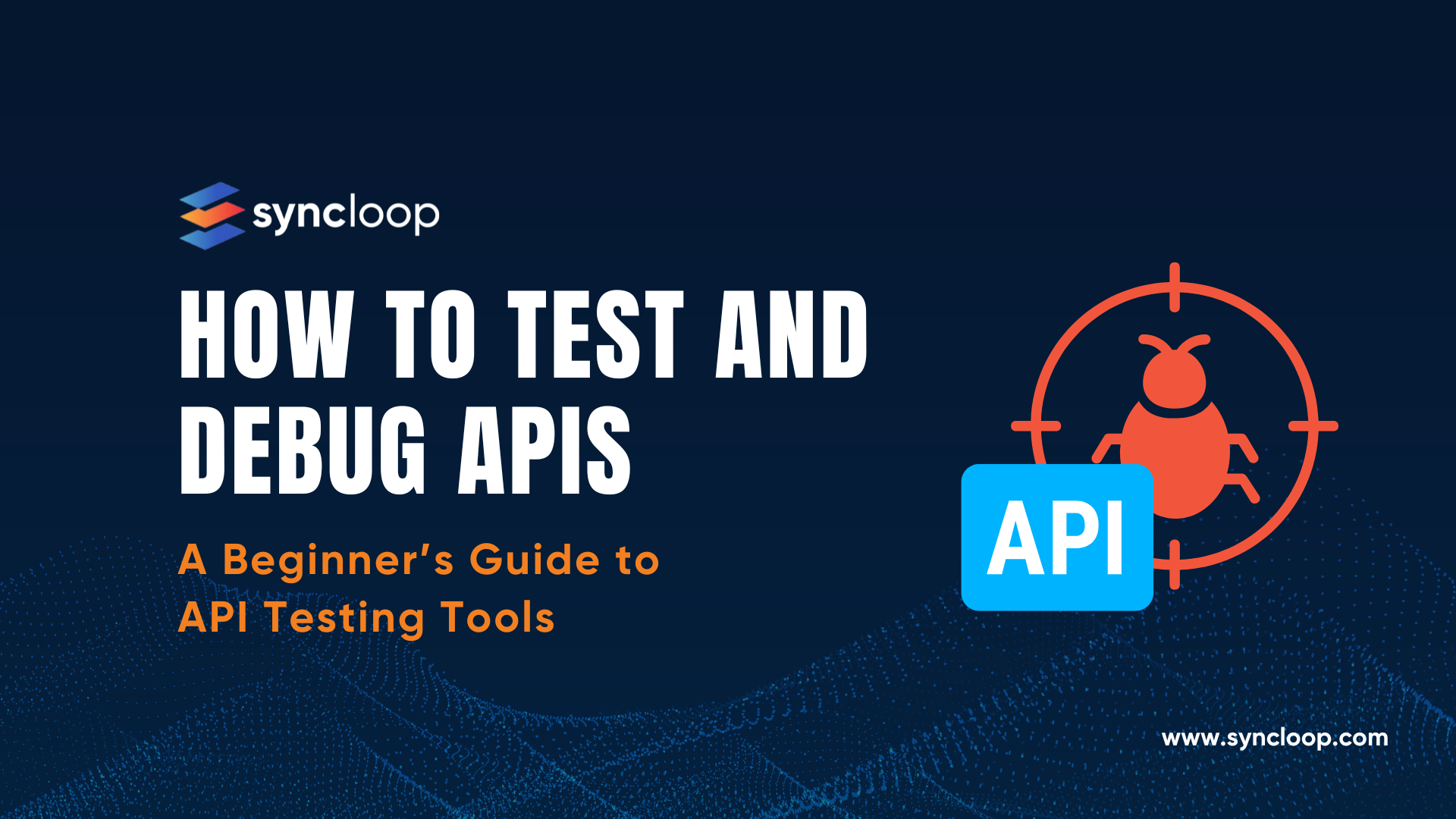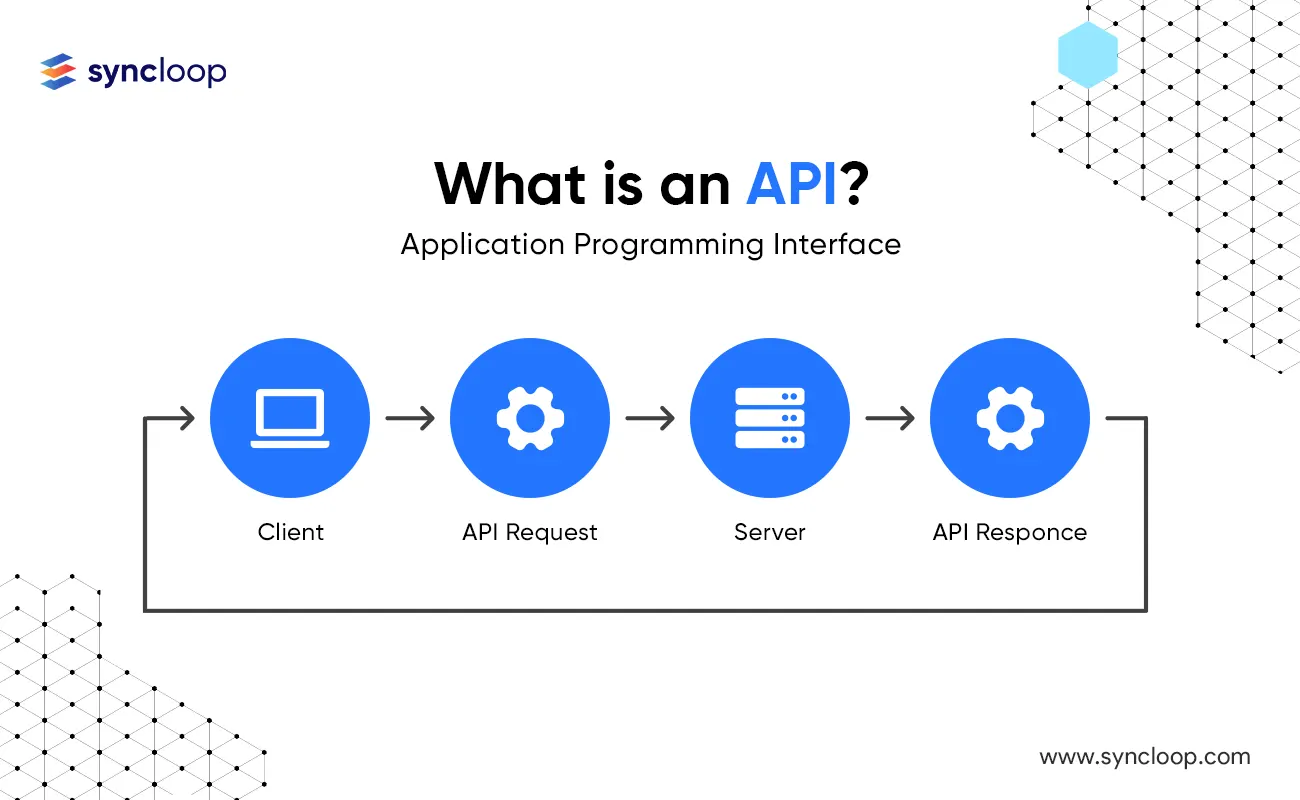How to Test and Debug APIs: A Beginner’s Guide to API Testing Tools
Posted by: Deepak | February 07, 2024

Categories: API First, Enterprise, API, Business Strategy
Introduction: The Significance of API Testing
API testing plays a crucial role in the software development life cycle, ensuring the reliability and functionality of applications. As a developer, understanding how to test and debug APIs is essential for delivering high-quality software products. In this beginner's guide, we will explore the fundamentals of API testing and introduce you to the tools that can make this process more efficient, with a focus on Syncloop, a leading API development platform.
Understanding APIs: A Foundation for Testing
Before delving into API testing, let's establish a clear understanding of what APIs are. APIs, or Application Programming Interfaces, serve as a bridge between different software applications, allowing them to communicate and share data seamlessly. Key components of an API include endpoints, requests, and responses.
Importance of API Testing: Ensuring Reliability and Identifying Bugs
API testing is vital for ensuring the reliability and functionality of applications. By conducting thorough tests, developers can identify and fix bugs early in the development process, preventing issues from reaching end-users. Effective API testing also contributes to a smoother integration of different software components.
Common Challenges in API Testing
Despite the benefits, API testing comes with its set of challenges. Lack of proper documentation, handling different data types, and addressing security concerns are common hurdles developers face. Overcoming these challenges is crucial for successful API testing.
Essential Tools for API Testing: An Overview
There are various tools available for API testing, each with its unique features. Syncloop is an efficient API development platform offering a visual experience-based development environment. This platform streamlines the process of building, integrating, deploying, and making APIs live in seconds.
How to Test APIs with Syncloop: A Step-by-Step Guide
Syncloop simplifies API testing through its user-friendly interface. Here's a step-by-step guide on how to test APIs using Syncloop:
- Sign Up for Syncloop:
- Visit Syncloop and sign up for a free trial account.
- Log In to the Workspace:
- Access the Integrated Development Environment (IDE) workspace after logging in.
- Create Your API:
- Use the intuitive tools in the workspace to create and manage your API.
- Test in Real Time:
- Configure parameters, test your API in real-time and execute it to obtain desired outputs.
Benefits of Syncloop in API Testing
Syncloop offers several advantages for API testing:
- Time and Resource Efficiency:
- Reduce API development time by 65%, debugging by 80%, and deployment and management by 90%.
- Collaborative No-Code Technical Architecture:
- Foster collaboration among team members by providing a no-code technical architecture.
Real-world Examples: Showcasing Syncloop in Action
To illustrate the effectiveness of Syncloop, here are real-world examples of successful API testing using the platform. These examples highlight the positive outcomes and efficiency achieved through Syncloop's visual API development.
Best Practices in API Testing
To ensure effective API testing, consider the following best practices:
- Document Test Cases and Results:
- Maintain detailed documentation of test cases and results for future reference.
- Regularly Update and Retest APIs:
- Stay proactive by regularly updating and retesting APIs to catch potential issues early.
Addressing Common Pitfalls in API Testing
Effectively navigating the challenges in API testing necessitates addressing common pitfalls such as handling unforeseen errors and ensuring compatibility with diverse environments. Cognizance of these pitfalls aids developers in the creation of robust APIs.
Future Trends in API Testing
Looking ahead, the future of API testing involves embracing emerging technologies. Predictions include advancements in automation, artificial intelligence, and improved testing methodologies. Staying informed about these trends will keep developers at the forefront of API testing innovation.
In Conclusion: Embracing API Testing for Software Eminence
In summation, API testing emerges as a pivotal facet of software development, safeguarding the reliability and functionality of applications. By embracing API testing tools like Syncloop, developers can streamline the testing process, conserve time and resources, and achieve superior outcomes. As the software landscape evolves, staying attuned to best practices and emergent trends contributes to continual enhancement in API testing.
Back to Blogs

